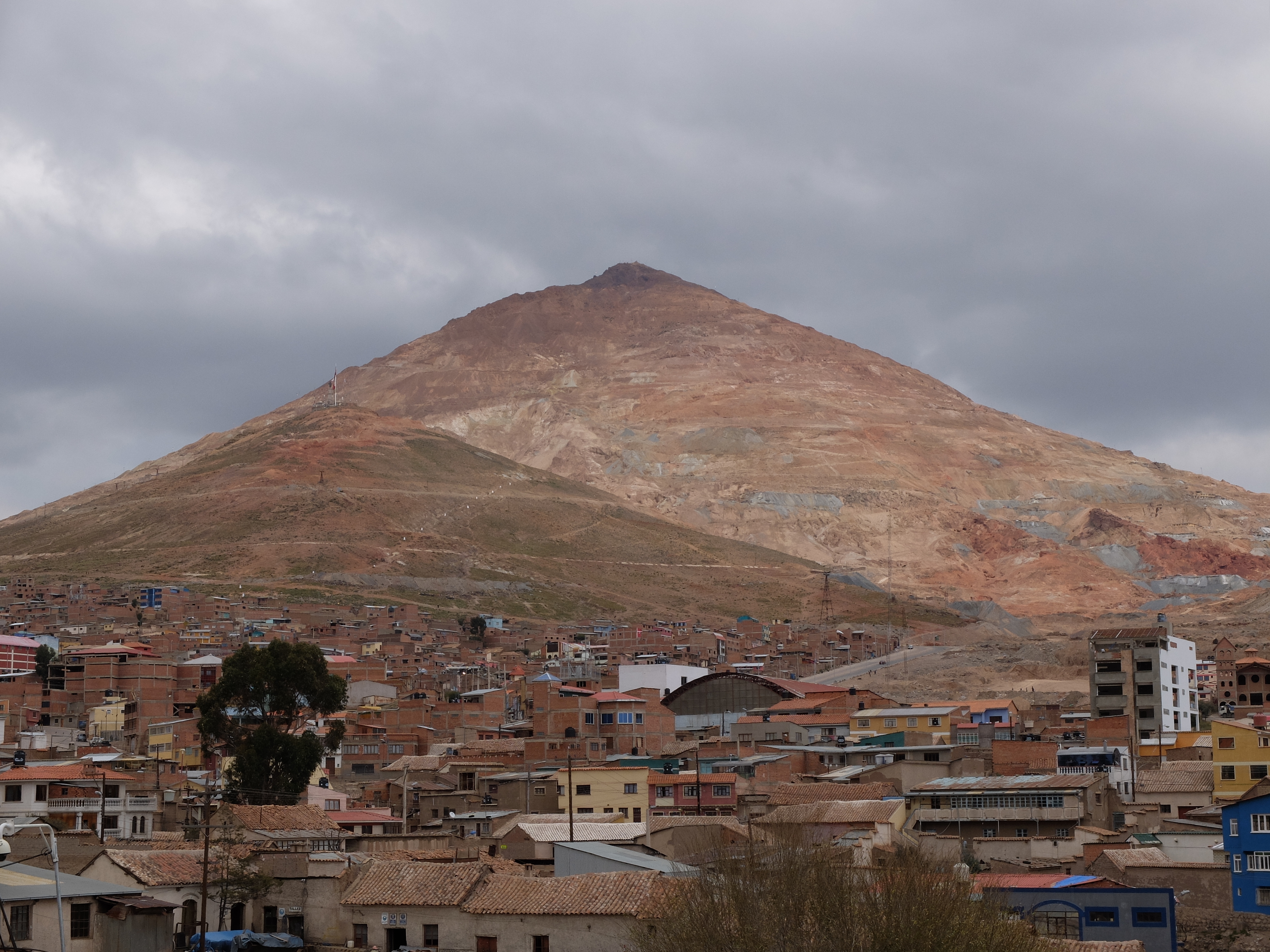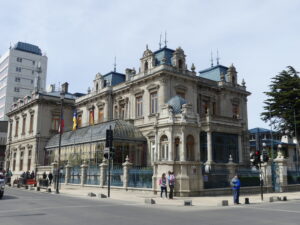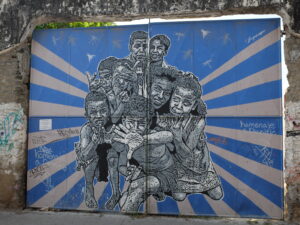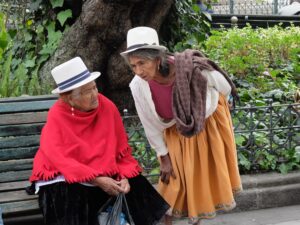
Potosi is less enticing for what’s left of its colonial town (where only Spaniards were allowed to live) than for its historical importance. Out of Cerro Rico, the double-humped mountain that rises behind Potosi and is featured on the Bolivian shield and flag, the Spaniards extracted heaps of silver – enough, they say here, to build a bridge from Potosi all the way to Spain.
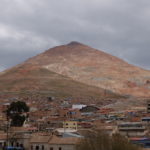
Some of the silver was formed into jewelry, religious and household objects, but much remained in the form of money, as the city became one of the earliest and, for over 250 years, the most important minting operations in South America.
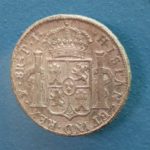
The still standing Casa de la Moneda – now a museum, but once a virtually fortified coin minter – demonstrates the evolving technology for minting silver coins, notably the royal Spanish Colonnia. These were named for the two Greek columns prominent on the back, symbols of sturdy reliability.
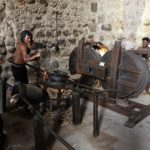
And the Casa museum also exposes the blood that tarnished the silver extracted here. In the minting house, the early conditions for smelting and stamping operations (including machines invented by DaVinci) were brutal and dangerous. The dangers were somewhat eased in the 18th century with gear operated machinery, powered first by mules then by steam – to serve the fast-growing Americas.
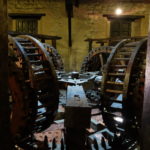
In the Casa de la Moneda, mined silver was refined to a high level of purity and molded into ingots through the smelting process, where it was mixed with other metals for strength. The ingots were then milled thinner and thinner till they slimmed to coin thickness, when they were die cut into circular shapes, and finally stamped on both sides with designs aimed to confirm authenticity and honest weight in silver.
Plenty of blood was spilled in the process. But, as a result of pirate activity to rob galleons of their silver and similar battles for control and plunder, along with natural catastrophes and shipwrecks, many sailors added their lives to the silver’s toll.
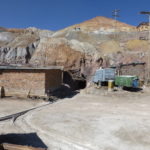
Much worse have been the mines from which the silver came. Enslaved Africans died quickly when brought here due to the harsh conditions of mining as well as the difficulties of adjusting to cold altitudes. Local natives suffered and died under forced labor as well. It is estimated that the mountain has killed 8 million people over time.

Today, Cerro Rico is like an anthill with endless passageways reaching deep inside. It is literally collapsing a bit each year. The levels are connected vertically by a kind of laddering that ties each to the next, 30 meters lower. At 10 levels down, oxygen is scarce and temperatures reach 40C.
The mountain still claims 65 dead per year – from cave-ins, asphyxiation in the lower tunnels, arsenic poisoning and silicosis due to the silica everywhere – even with limited commercial activity. Contemporary miners, organized in collective groups of about a dozen each, have little social support or insurance; they depend only on themselves or each other. Most don’t live past the age of 40.

They outifit themselves at the miner’s market on the road up to Cerro Rico, where they can buy from stalls and small tiendas all they need in clothing, tools, and equipment. We shopped at one of these but we didn’t need to buy any supplies as our guide, who was an experienced miner, ensured we had protective clothing and hard hats with headlights, as well as rubber boots for slogging in the muddy water. At the same stalls and shops, we could have bought some plastic dynamite, costing about 40 Bs (about $6 USD) for the stick, cap and four minute fuse. We would need about 15 of these to knock out a meter square chunk of the dense rock at the mine. An average building, like the one we were standing in front, would see a lot worse damage – 2 or 3 meters square. Powerful stuff.

It used to be that anyone, without restrictions, could go to the miners’ market and pick up some of this dynamite. More recently, the government has tried to limit these purchases, after one miner tried to take some dynamite back to La Paz on a commercial flight.
They also buy a lot of coca leaf, as the miners, like many South American farmers and workers, chew a wad of these leaves for the energy to withstand 12 hour days and the hot atmosphere.
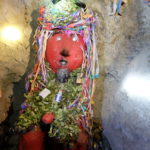
Not surprisingly, miners who enter the tunnels always pay respects to Tio, a horned scarecrow representing the devil seated near the entrance, bringing gifts of coca leaf, strong alcohol, cigarettes, and even llama blood. The story goes that the Spaniards threatened slow-working mine workers with death and torment at the hands of the fallen god (theo in Greek), Lucifer. The name was then familiarized as tio, or uncle. And the horrible conditions probably seemed like some kind of hell anyway. Then they pray for safety to the ancient tribal earth mother, Pachamama. With our miner guide, we did the customary rituals, minus the llama blood, on our relatively safe tourist visit through one entrance.

As the Spanish world grew, the reliable value of the silver Colonnia peso or dollar (peso meaning “weight” in silver) was the coin of the realm for global trade across the Pacific and Atlantic. The mines kept the silver flowing. Far and wide, the insignia of Potosi stamped on one face of the coin – the overlapping letters PTSI – became well known. Years later, the US rejected the British and their pound, moving to a ‘dollar’ currency backed by silver. It adopted part of the Potosi logo, the overlapping S and I, for the dollar sign. Ever since, all currencies – yen, euro, pound, etc. – have used the slash or the ‘I’ of Potosi in their symbols. Its bloodiness be damned.
(Also, for more pictures from Bolivia, CLICK HERE to view the slideshow at the end of the itinerary page.)


